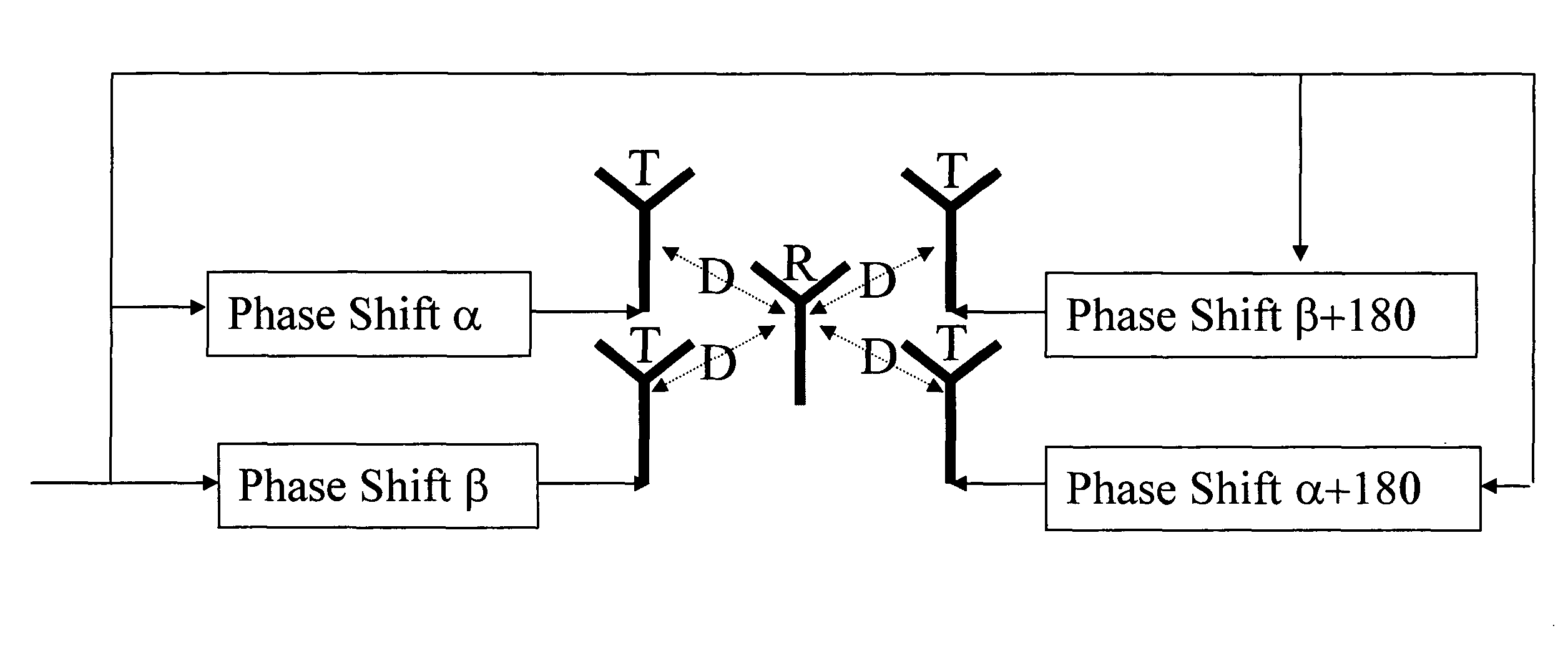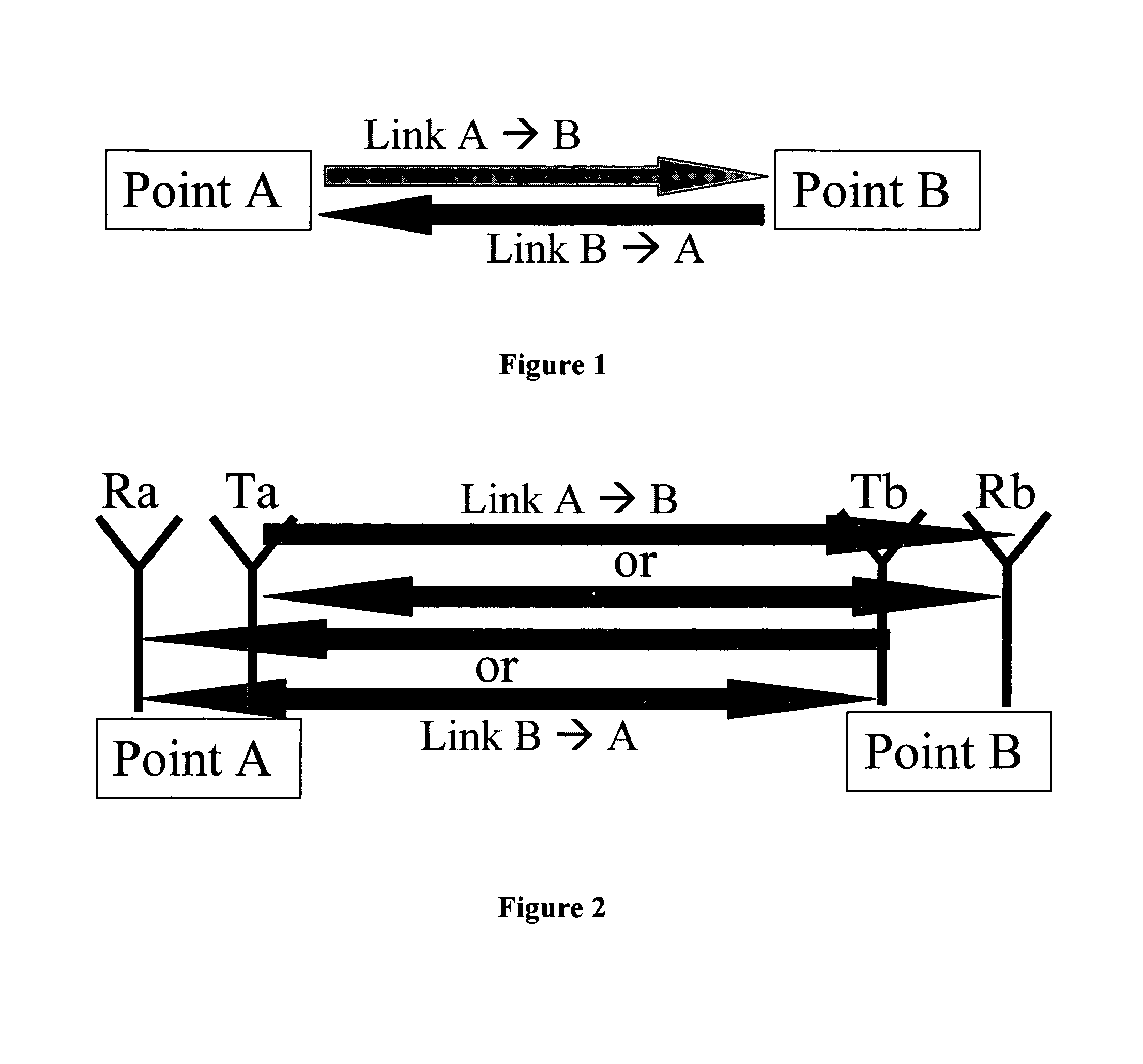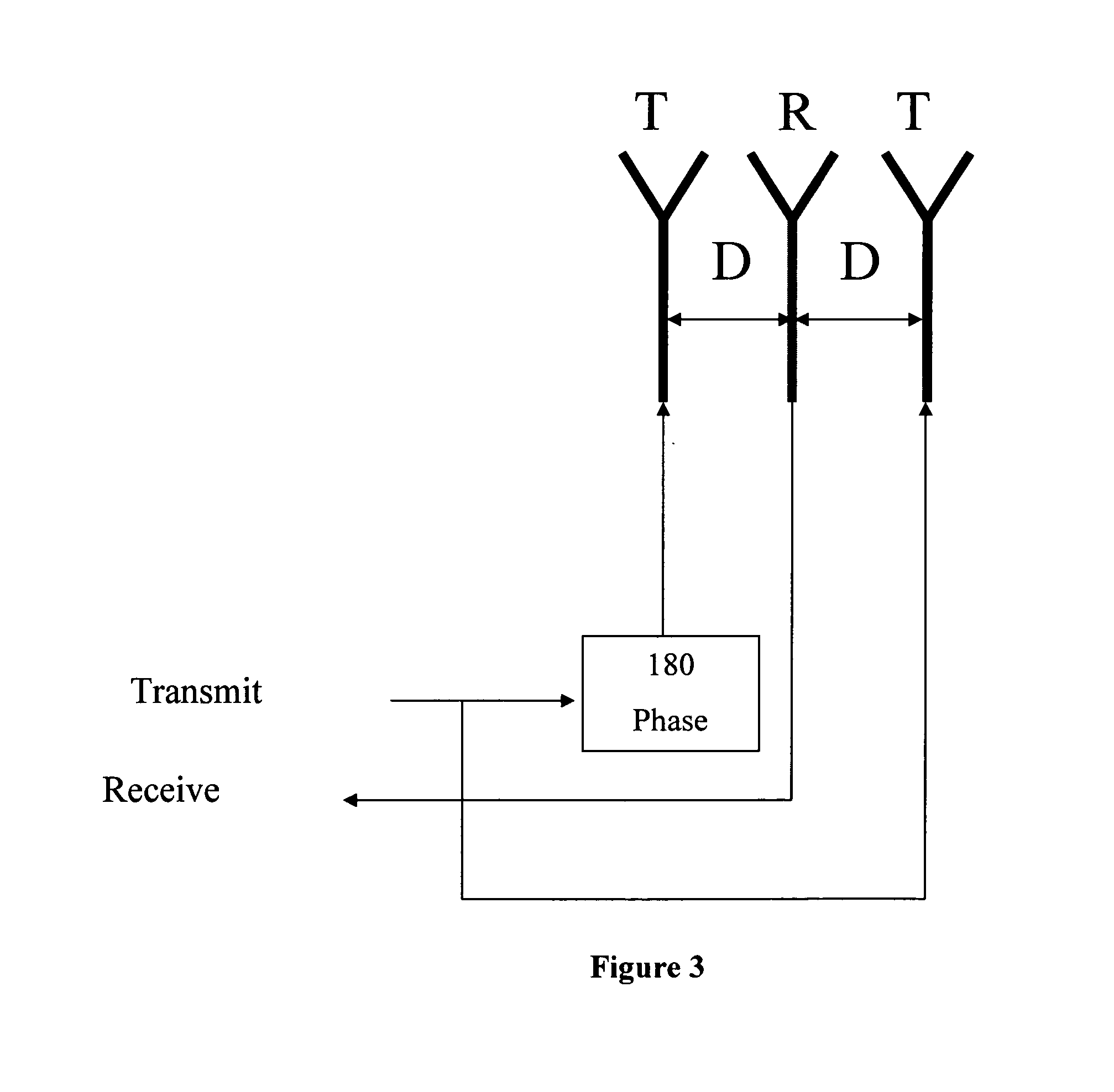Methods for spatial multiplexing of wireless two-way channels
- Summary
- Abstract
- Description
- Claims
- Application Information
AI Technical Summary
Benefits of technology
Problems solved by technology
Method used
Image
Examples
Embodiment Construction
[0013]This invention is now described, by way of examples of its preferred embodiments.
[0014]This invention introduces a low complexity method for spatial duplexing where special antenna structures and signal processing algorithms work together to provide a full duplex wireless channel (the flow of information can simultaneously occur in both directions). This invention results in increasing the bandwidth efficiency, its hardware complexity is significantly less than FDD, its network control overhead and network management complexity is comparable to FDD and significantly less than TDD, and there is no delay or other overheads in switching the direction of information flow as is inherent to TDD systems.
[0015]In a preferred embodiment of this invention, the two links are further separated through using different spreading codes and / or through using different tones of an OFDM scheme. In a preferred embodiment of this invention, one of the two inks has a lower rate and supports control...
PUM
 Login to View More
Login to View More Abstract
Description
Claims
Application Information
 Login to View More
Login to View More - R&D
- Intellectual Property
- Life Sciences
- Materials
- Tech Scout
- Unparalleled Data Quality
- Higher Quality Content
- 60% Fewer Hallucinations
Browse by: Latest US Patents, China's latest patents, Technical Efficacy Thesaurus, Application Domain, Technology Topic, Popular Technical Reports.
© 2025 PatSnap. All rights reserved.Legal|Privacy policy|Modern Slavery Act Transparency Statement|Sitemap|About US| Contact US: help@patsnap.com



